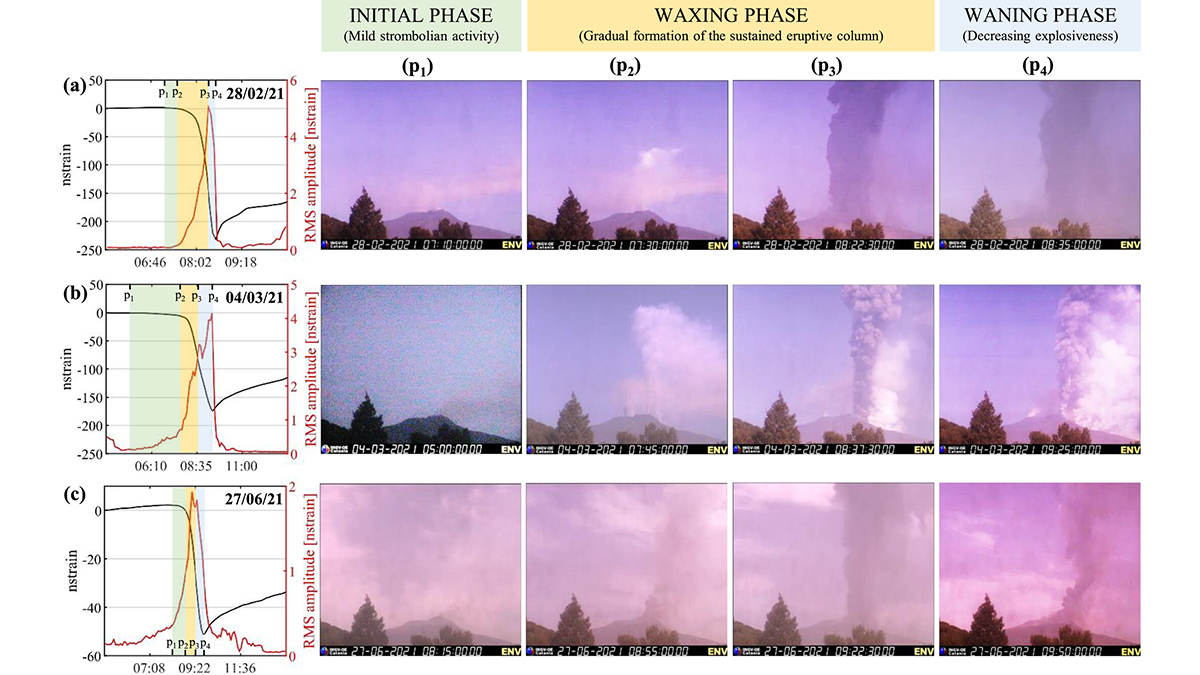Editors’ Highlights are summaries of recent papers by AGU’s journal editors.
Source: Journal of Geophysical Research: Solid Earth
Seismic monitoring has served as one of the most common and reliable tools for volcanic eruption forecasting. While seismic networks have many advantages over other types of monitoring, the data can be complex to interpret because they include signals from a large variety of sources.
Carleo et al. [2025] analyze 84 eruptions from the South-East Crater of Mount Etna between 2012 and 2023 using data from a 200-meter-deep borehole strain meter. To complement the low frequency strain signals associated with the eruptions, the authors produce a strain tremor record from the higher frequency strain data that is consistent with signals from a nearby seismometer. This large dataset permits analysis using an automated clustering approach.
Interestingly, classification of the strain data comes much closer to matching those made by volcanologists based on the eruption behavior, than does the tremor-based classification. So, while tremor may reflect both deep and shallow magmatic fluid processes, which can be complex and time varying, the strain data may better capture the amount of magma flowing out of the reservoir. This implies that broader implementation of real-time strain monitoring could provide important information for eruption early warning.
Citation: Carleo, L., Currenti, G., Bonaccorso, A., & Sicali, A. (2025). Relation between volcanic tremor and geodetic strain signals during basaltic explosive eruptions at Etna. Journal of Geophysical Research: Solid Earth, 130, e2025JB031564. https://doi.org/10.1029/2025JB031564
—Gregory P. Waite, Associate Editor, JGR: Solid Earth

